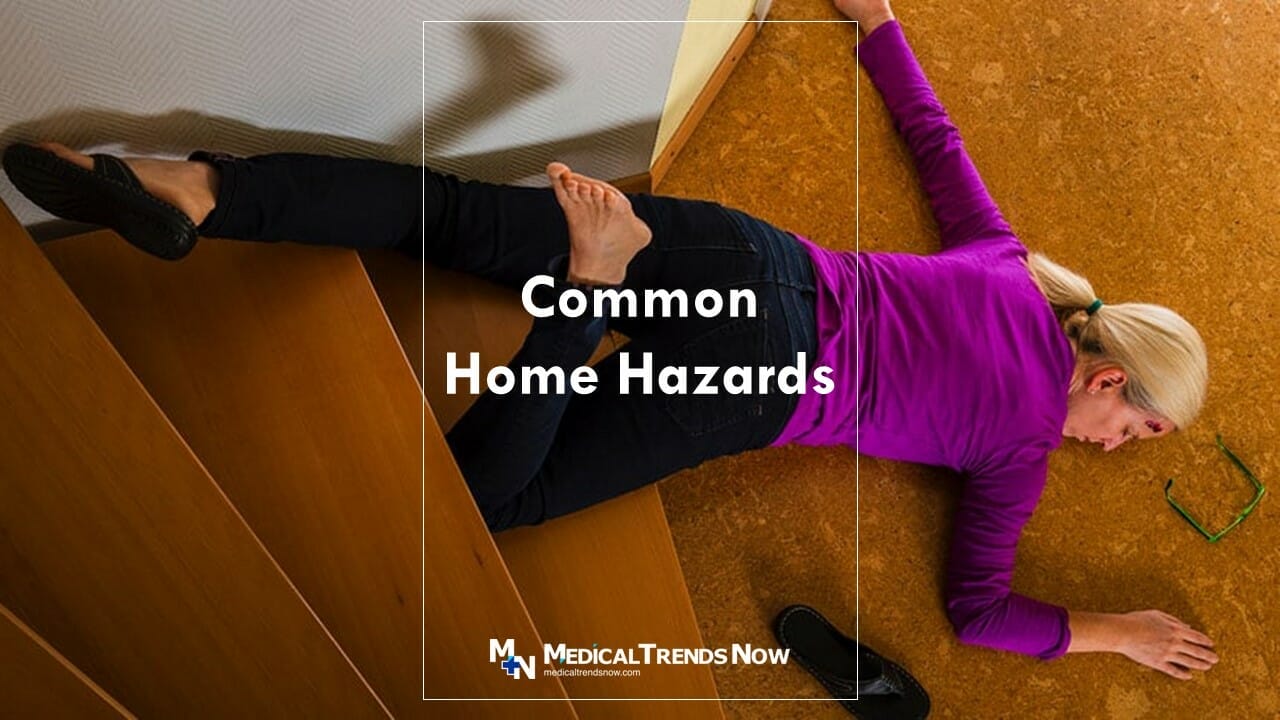Table of Contents
We all like to think that our homes are safe havens. But the truth is, there are many hidden dangers lurking inside our homes. Your home is supposed to be your safe haven, but it can actually be full of hidden dangers. From harmful chemicals to mold and pests, here are the most common home hazards you didn’t know were lurking in your house.
10 Home Hazards You Didn’t Know Were Lurking in Your House
There are many dangers that come with owning a home. Some of these dangers are hidden, and some are in plain sight. It is important to be aware of these dangers so that you can take steps to protect yourself and your family. Here are 10 home hazards you didn’t know were lurking in your house.
1. Asbestos
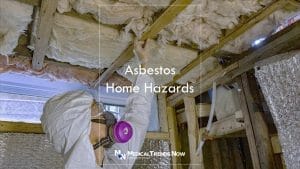
Asbestos is a naturally occurring mineral that was once used in a variety of construction materials because of its heat-resistant and durable properties. However, asbestos exposure can cause serious health problems, including lung cancer. If you suspect that your home may contain asbestos, it’s important to know the risks and how to protect yourself from exposure.
Asbestos was commonly used in insulation, flooring, shingles, and other building materials before its health hazards were fully understood. If your home was built before 1980, it’s likely that asbestos-containing materials were used in its construction. Even if your home is newer, there may be asbestos lurking in older appliances or fixtures.
If you’re doing any sort of home renovation or repair work, it’s important to be aware of the potential for asbestos exposure.
2. Lead
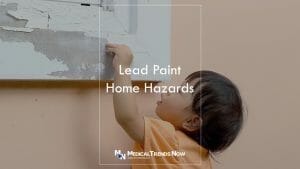
Lead poisoning is a serious and sometimes fatal condition. It occurs when lead builds up in the body, typically over a period of months or years. Even small amounts of lead can cause serious health problems.
Lead is found in many places in the home, including paint, dust, water, and soil. Lead can enter the body through the mouth, nose, or skin. Once inside the body, lead can build up in the blood and damage the brain and other organs.
3. Radon

Radon is an invisible, odorless, and tasteless gas that seeps up from the ground and can enter your home through cracks in foundations or openings around pipes. You can’t see it, smell it, or taste it, but radon could be lurking in your home at dangerous levels.
Radon is a radioactive gas that is the leading cause of lung cancer among non-smokers. In fact, the Environmental Protection Agency (EPA) estimates that radon causes about 21,000 lung cancer deaths each year.
If you’re concerned about radon in your home, there are simple tests you can take to check the level of radon gas present. If the level of radon gas is high, there are ways to reduce the amount of gas in your home.
4. Formaldehyde
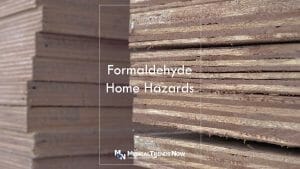
Formaldehyde is one of those home hazards you didn’t know were lurking in your house. It’s a colorless, odorless gas that is commonly used in the manufacturing of building materials and household products. When formaldehyde is released into the air, it can cause respiratory problems, headaches, and watery eyes.
You may not know it, but formaldehyde could be lurking in your home right now. It’s often found in pressed-wood products, such as particleboard, plywood, and fiberboard. It’s also used as an adhesive in some glues and adhesives. Formaldehyde can also be found in some insulation materials and fabrics.
If you’re concerned about formaldehyde exposure in your home, there are some things you can do to reduce your risk.
5. Carbon monoxide
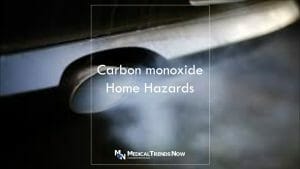
Carbon monoxide is an invisible, odorless gas that can be deadly. The Centers for Disease Control and Prevention (CDC) estimates that approximately 430 people in the United States die from unintentional carbon monoxide (CO) poisoning each year.
Many people are unaware of the dangers of carbon monoxide and do not know how to protect themselves from this potentially deadly gas. Here are some important things to know about carbon monoxide and how to keep your family safe from this hidden hazard.
Carbon monoxide is produced whenever any fuel is burned. Appliances such as furnaces, water heaters, stoves, and lanterns that use propane, natural gas, kerosene, or charcoal produce carbon monoxide when they are not operating properly or when they are used in an enclosed space.
6. Pesticides
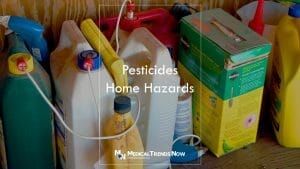
Pesticide is one of those home hazards you didn’t know were lurking in your house. Many people don’t realize that the pesticides they use to kill bugs and rodents can also be harmful to humans. Pesticides can contain chemicals that are poisonous if inhaled or ingested and can cause skin irritation and allergic reactions.
Pesticides should be used sparingly and only when necessary, as they can pose a serious health risk to you and your family. If you must use pesticides, always follow the directions on the label carefully, and make sure to ventilate the area well before using them.
7. Mold
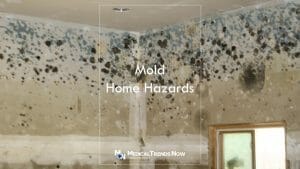
Mold is one of those home hazards that you may not know is lurking in your house. The spores from mold can cause allergic reactions, respiratory problems, and other health issues. Mold loves damp, dark places, so it’s important to keep your home clean and dry.

Here are some tips to prevent mold from taking over your home:
- Keep humidity levels low by using a dehumidifier or opening windows when weather permits.
- Clean up any water spills immediately and dry wet areas thoroughly.
- Repair any leaks in your plumbing or roof.
- Use an exhaust fan when cooking or showering to prevent moisture buildup.
- Monitor areas prone to mold growth, such as the basement, bathroom, and laundry room.
8. Secondhand smoke
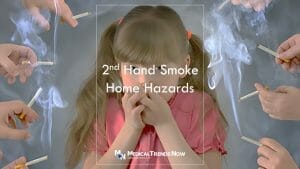
Secondhand smoke is one of those home hazards you didn’t know were lurking in your house. It’s odorless, invisible, and can be deadly. According to the CDC, secondhand smoke is responsible for more than 7,300 lung cancer deaths each year. That’s more than car accidents and firearm-related fatalities combined.
So how can you protect yourself and your family from this hidden danger? The best way is to eliminate smoking in your home altogether. If that’s not possible, try to create a smoke-free zone in your house where everyone can breathe easily.
9. Dust mites
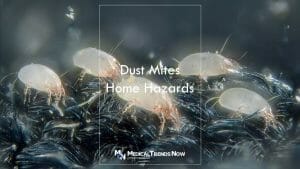
Most people are familiar with common household pests like rats, ants, and cockroaches. But there’s one home hazard that you may not be aware of: dust mites.
Dust mites are tiny creatures that thrive in warm, humid environments. They’re commonly found in mattresses, upholstered furniture, and carpeting.
While dust mites don’t carry diseases, they can cause allergies and asthma attacks in some people. If you’re allergic to dust mites, you may experience symptoms like sneezing, coughing, and a runny nose.

If you think you might be allergic to dust mites, there are a few things you can do to reduce your exposure. Start by vacuuming regularly and using an air conditioner or dehumidifier to keep your home’s humidity levels low.
10. Bacteria and viruses
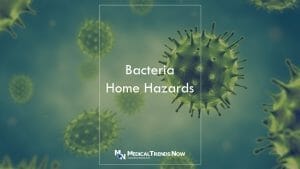
Bacteria and viruses are one of those home hazards you didn’t know were lurking in your house. Although you may take precautions to clean your home regularly, there are still many unseen dangers lurking in your house. Bacteria and viruses can cause serious illnesses and are often spread through contact with contaminated surfaces. To protect yourself and your family, it’s important to be aware of the potential house hazards in your home and take steps to prevent them.
These Areas in Your House are Actually Full of Home Hazards
Home sweet home, right? Unfortunately, our houses are full of hidden dangers, just waiting to cause us harm.
Dangers in the Kitchen: Home Hazards

The kitchen is full of home hazards, from knives to poisonous cleaning products.
Home hazards are not just found in the garage or outside in the yard; the kitchen is full of potential dangers, from knives to poisonous cleaning products. Even everyday items can be dangerous if used incorrectly. Here are some tips on how to keep your kitchen safe:

• Keep knives out of reach of children and always supervise them when they are using knives.
• Store poisonous cleaning products and chemicals in a locked cabinet or out of reach of children.
• Never leave cooking food unattended, and always use caution when handling hot pots and pans.
By following these simple tips, you can help keep your kitchen safe for everyone in the family.
Dangers in the Bathroom: Home Hazards

The bathroom may be small, but it’s packed with potential dangers, like slippery floors, hand dryers full of bacteria, and electrical outlets.
There are a few things you can do to make your bathroom safer, though.
- First, always keep a non-slip mat in your tub or shower to prevent falls.
- Second, don’t use electrical appliances near the sink or in the shower – water and electricity don’t mix!
- Finally, be careful when using cleaning products – some of them can be very dangerous if used incorrectly.
By following these simple safety tips, you can help keep yourself and your family safe from harm in the bathroom.
Dangers in the Bedroom: Home Hazards

From sharp corners to loose cords, the bedroom is full of household hazards.
A bedroom is a place where we should feel safe and relaxed, but unfortunately, it can be full of home hazards. From sharp corners to loose cords, there are many potential dangers that can cause injury.
- To keep your bedroom safe, start by inspecting all of the furniture for sharp edges and corners.
- Cover any exposed areas with padding or tape to prevent cuts and scrapes.
- Next, take a look at all of the cords in the room. Make sure they are securely fastened and not in a position where they could be tripped over.
- Finally, declutter the room to reduce the risk of trips and falls.
By taking these simple precautions, you can make your bedroom a safe haven from potential home hazards.
Dangers in the Living Room: Home Hazards
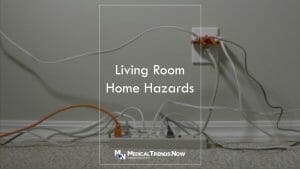
The living room is full of potential household hazards, from fireplaces to furniture. Homeowners should take care to ensure their living room is safe for both relaxing and entertaining.
Some common home hazards in the living room include:
Fireplaces
Homeowners should make sure their fireplace is properly vented and that there are no flammable objects near it. They should also have a fire extinguisher on hand in case of an emergency.
Furniture
Many people don’t realize that furniture can be a hazard if it’s not placed properly. Make sure all furniture is securely anchored to the wall or floor so it doesn’t tip over, and keep any sharp edges away from areas where people will be walking or sitting.
Electrical outlets and cords
These can be a shock hazard if not used properly.
Glass tables and shelves
These can cause serious cuts if broken.
Stairs
Another common home hazard is falling. Many people are injured each year from falling downstairs or off of furniture. To prevent falls, it is important to keep the living room free of clutter and to repair any broken furniture. These are just a few of the many hazards that can be found in the living room. It is important to be aware of these dangers and take precautions to avoid them.
Dangers in the Garage: Home Hazards
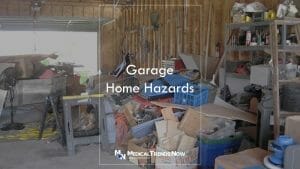
The garage is full of potential household hazards, from chemicals to power tools.
When it comes to your garage, it’s important to be aware of the potential home hazards that lurk within. From chemicals and power tools to sharp objects and flammable materials, there are many things that can pose a danger to you and your family.
By taking some simple precautions, you can make your garage a much safer place. First, be sure to keep all dangerous items properly stored and out of reach of children. Second, make sure you have adequate ventilation to avoid fumes from build-up. Finally, always use caution when using power tools or working with chemicals.
By following these simple tips, you can help keep your garage safe for everyone.
The Dangers of These Home Hazards
In the home, there are many potential household hazards that can lead to injury or even death. These home hazards include electrical outlets, cords and plugs, stairs, windows and doors, sharp objects, cleaning products and chemicals, and pets.
Electrical outlets, cords, and plugs are one of the most common home hazards in the house. They can cause serious electrical shock if not used properly. It is important to keep cords and plugs away from children and pets and to never overload an outlet.
Stairs are another common hazard in many homes. Falls downstairs can result in serious injuries, including broken bones and head injuries. It is important to keep stairways clear of clutter and to always use handrails when going up or down stairs.
Windows and doors are also potential household hazards in the home. Windows can break easily, causing cuts or bruises.
How to Prevent These Home Hazards
There are many hazards that can be found in the home. Some of these hazards are easy to spot and avoid, while others are not so obvious. By taking some time to identify potential hazards in your home, you can help keep your family safe.
One of the most common hazards in the home is trip and fall accidents. These accidents can often be prevented by removing clutter from walkways and keeping floors clean and dry. Another hazard that is often found in the home is electrical shock. To prevent this, make sure to use proper safety plugs and never overload electrical outlets.
If you have small children in the home, there are additional hazards to be aware of. Children can easily choke on small items such as coins or buttons. Keep these items out of reach or safely stored away. poisonous cleaning products and medications should also be kept out of reach of children.
Home hazards are lurking in every corner, waiting to cause accidents, injuries, and even death. But there are ways to prevent these household hazards from turning your home into a danger zone. Here are some tips on how to prevent common home hazards:
Keep your home clean and clutter-free.
A cluttered home is an accident waiting to happen. Trip over a toy or misstep on a pile of clothes and you could seriously injure yourself. So take the time to declutter your home regularly.
Don’t forget about safety in the kitchen.
The kitchen is one of the most dangerous rooms in the house, thanks to sharp knives, hot stoves, and slippery floors. To reduce the risk of accidents, always keep your kitchen clean and organized.
Turn on the lights in dark areas or at night.
Another way to prevent hazards is to make sure your home is well-lit. This will help you see any potential dangers before they become a problem.
Take action right away if you spot a danger
Finally, always keep an eye out for potential hazards and take action to fix them right away.
Proper maintenance
Make sure to properly maintain your home. This means regularly checking for things like loose handrails, cracked sidewalks, and frayed electrical cords. If you find any potential hazards, fix them immediately.
Educate about home hazards and safety
Educate your family members about home safety. Teach them how to identify potential hazards and what to do if they come across one.
Always sanitize
Sanitize the house regularly to ensure that there are no germs around. This will help prevent any infections and other health problems.
Takeaway: 10 Home Hazards You Didn’t Know Were Lurking in Your House
In conclusion, it is important to be aware of the hidden home hazards in your house in order to keep your family safe. Take some time to inspect your home for potential dangers and make any necessary changes. By being proactive, you can prevent accidents and create a safer environment for your loved ones.
There are many potential hazards in your home that you may not be aware of. By taking some time to identify these hazards and taking steps to mitigate them, you can make your home a safer place for you and your family.
Home hazards can be found in all corners of the house, and they are often lurking in plain sight. By taking a few simple precautions, you can prevent home hazards from turning into accidents.
Sources: Home Hazards
- Safety at Home: 10 Common Safety Hazards around the House – Stay Safe Org
- Identify possible hazards in your home | City of Vancouver
- Household hazards – American Veterinary Medical Foundation (AVMF)
- Household Hazards and Disasters – Texas A&M AgriLife Extension
- Household Hazards Hunt and Answers – EPA
- Top 5 Hidden Home Hazards | CPSC.gov
- 10 SAFETY HAZARDS FOR CHILDREN IN THE HOME – Sanford Health
- Home Safety Checklist – Emergency Physicians
- Home Safety Checklist – New York State Department of Health

